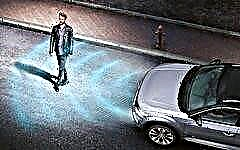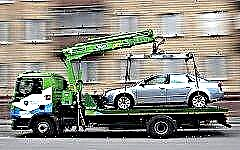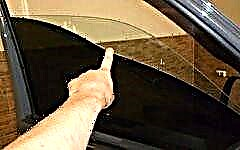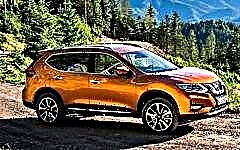
With the onset of the warm season, many motorists no-no, and even look towards the Crimea, already planning a road for a trip to the sea. Alternatively, you can choose a route, most of which runs along the route of the same name with the resort peninsula. What is this highway and why it does not lead directly to the beach - more on that later.
General information about the track

The 720 km M2 federal highway stretches from Moscow to the Nekhoteevka checkpoint located in the Belgorod region on the Russian-Ukrainian border. Motorists seeking to Crimea can continue their journey by following the M20 highway to Kharkov, and then drive to Yalta along the M18 route.
At the same time, the road from the northern border of Crimea to Yalta is also designated by the index 35A-002. BUT The M2 highway itself is part of the E105 Euro route and leads motorists through the open spaces of 5 areas:
- Moscow;
- Tula;
- Orlovskaya;
- Kursk;
- Belgorod.
155 kilometers of the M2 road from Moscow to Tula can be called a high-speed highway. Well, after that, right up to the customs in Nekhoteyevka, travelers will have to be content with a completely ordinary highway.
Prototypes of the "Crimea" track

In ancient times, there was the Crimean tract, which began on the territory of the present Dnipropetrovsk region and led to the peninsula. Traders carried salt to the mainland, and grain and all kinds of other products in the opposite direction. After the Hetmanate passed under the protectorate of the Russian tsar, the route stretched all the way to Moscow.
In 1828, Emperor Nicholas I initiated the construction of a new road in the places where the tract runs. In the course of thirty years of construction, not only the transport route, but also the accompanying telegraph route was laid. In 1858, when the highway was ready for operation, passenger carriages began to ply regularly on it.
After the end of World War II in 1949-50, the destroyed highway was reconstructed, and quite quickly. It was expanded to 12-15 m, and also supplemented with bridges and overpasses. And most importantly, along the entire route, the road now had an asphalt concrete bed. By the way, until the mid-1980s, the Moscow - Simferopol highway was number 4.
Route M2. Start

On the eve of the 1980 Moscow Olympic Games, construction began on a high-speed analogue of the then Crimean Highway. Moreover, the lion's share of the sections of the new route should have been formed as a result of the renewal of the old track. But by the opening of the 1980 Olympics, only a part of the road that fell on the Moscow region was built, and the construction was not completed by one hundred percent.
The year 1983 was marked for the Crimean highway by the withdrawal to the city of Serpukhov and the start of the development of a project for the reconstruction of the road from Tula to Trosna. With the commissioning of the newly built bridge across the Oka, the old one was closed for cars, and then dismantled, with the exception of one support.
Since the beginning of the 90s, the construction of the M2 route was almost frozen, only occasionally the old road was reconstructed. As a result, the highway, which was supposed to lead to the Crimea, was laid only up to Tula. The length of such a highway was 155 km.
With the departure of the USSR into history, the Crimean Highway completely lost its significant role in transport, economic and strategic plans. In fact, the route was divided between Russia and Ukraine. And in none of these states did it receive a priority position. Although it was precisely from the moment of the dissolution of the Soviet Union that the route leading from Moscow to the south acquired its current name - M2 "Crimea".

During the Soviet era, traffic along the highway was much more lively than it is now. The decline in motorists' interest in this road is largely due to events in the international arena.
Of course, the addition of Crimea to Russian territory in 2014 should have increased the popularity of the road leading to it. However, the different interpretation of the status of this peninsula by the Russian Federation and Ukraine led to a significant decrease in traffic on the M2 route. Perhaps, only with the warming in relations between these countries, the "two" will be able to compete with the same M4 highway.
In addition, the highway "Crimea" may become toll. More precisely, a part of this route from 21 to 108 kilometers, located in the Moscow region. It is even planned to establish 21 points in the area where it will be possible to deposit funds to obtain the right to travel.
Route features

The M2 highway starts at the intersection of the Moscow Ring Road and the Varshavskoe Shosse, the number of lanes at its distance varies from 1 to 5 in each direction. The route abounds in various hillocks, sometimes the driver has to overcome steep ascents, the same descents, and often sharp turns. Forests and fields are visible from the car window. Also, a person passing along this road will encounter many bridges over the rivers.
If you believe Google, then from Moscow to the checkpoint "Nekhoteyevka" can be reached along the route "Crimea" in 9 hours and 21 minutes. However, it should be noted that the duration of such a trip is greatly influenced by the degree of traffic congestion. In the Oryol, Kursk and individual districts of the Tula region, M2 is basically a narrow two-lane road, only in places equipped with a third belt, which provides the ability to overtake in one direction or another. So with an abundance of trucks, you can't really accelerate here.
Such settlements as Tula, Orel, Belgorod are bypassed by the highway, although they can be very interesting for tourists. Among the architectural landmarks that the M2 boasts, it is worth noting:
- Tula Kremlin;
- I.S.Turgenev Museum in Orel;
- Belgorod State Philharmonic.
If the driver wants to save time or is simply afraid of getting lost in an unfamiliar city, then it is better, of course, to choose a roundabout route, although traffic jams are not excluded there, and the quality of coverage is not always at its best. Oryol bypass motorists generally describe the following words: "no road, no gas stations."
It is curious that the Crimea route in some sections in the Moscow and Tula regions is accompanied from the western side of the Simferopol highway. This is how the earlier built M2 backup is named on house signs and roadside signs. But these are different tracks, and they should not be confused.
Canvas on M2

Throughout its entire length, the Krym highway is covered with asphalt concrete, mostly flat, but not devoid of rutting in some places.
Traffic on the M2 is relatively low, and largely due to this, the road surface is generally in good condition. The road from Moscow to Tula, as well as the part of the route to the Belgorod Region, is distinguished by a particularly high quality. Although some motorists found broken places near the bridge over the Oka.
But most of the flaws of the M2 highway are in the part of it that belongs to the Kursk region. However, the coverage is periodically restored, so the situation may change. It is noteworthy that the repair of the highway and the bridges on its way is becoming the subject of claims from some drivers. Most of the reviews about the Crimea road are positive.
Infrastructure

There are filling stations along the M2 highway, sufficient for long-distance travel. Sometimes such establishments coexist with cafes, as is done at the Lukoil gas station, which has received approval from motorists, located 120 km from the Moscow Ring Road.
The menu of the local "fast food" is not limited to the standard set of coffee and hot dogs. The hungry wanderer is offered several first courses and side dishes, there are also cutlets, chicken schnitzels, dumplings, and something for dessert.For 300 rubles, you can have a normal lunch in this institution.
Hotels and service stations can also be found along the M2 highway. On the way, you can swim in the Oka. Of course, if the weather permits. In the area of the multilateral automobile checkpoint "Nekhoteyevka" there are several offices that provide assistance in paperwork and customs clearance, as well as a Duty-free shop.
Pros and cons of the M2 track

Based on the current state of the road "Crimea", as well as the reviews of the motorists who conquered it, one can single out the positive and negative features of this route.
Pros:
- generally good condition of the canvas;
- rich infrastructure;
- scenic views;
- a large number of attractions along the way;
- free.
Minuses:
- to get to Crimea, you need to cross two borders;
- queues often form at the Nekhoteyevka checkpoint during the holiday season;
- traffic jams due to road repairs or insufficient road width;
- frequent speed limit;
- inconsistency of signs: it happens that a sign prohibiting overtaking is adjacent to a dotted line.
Conclusion
You can get from Moscow to Yalta by car, by and large, in two ways, one of which runs along the M2 highway, and then along Ukrainian roads. Another route is longer - through the M4 and the Crimean bridge. Until recently, a significant traffic flow on the "two" was observed in the summer, when many motorists moved to the Black Sea on vacation. But now the traffic on this road is not so high, even during the holiday season. Whether the highway leading from the Russian capital to the Nekhoteyevka farm will continue to be modernized depends largely on a number of economic and political factors.

|| list |
- General information about the track
- Prototypes of the "Crimea" track
- Route M2. Start
- Route features
- Canvas on M2
- Infrastructure
- Pros and cons of the M2 track











